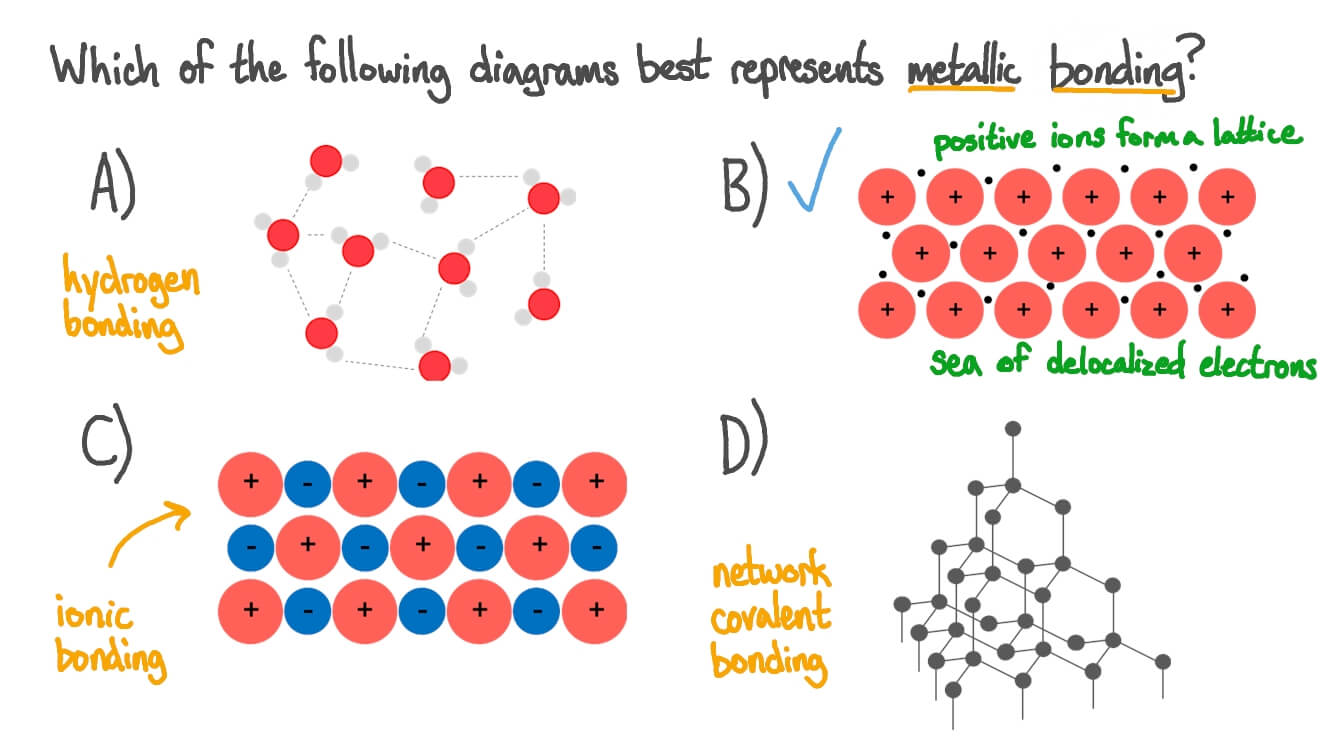Diagram showing metallic lattice structure with delocalised electrons. A metallic bonding theory must explain how so much bonding can occur with such few electrons (since metals are located on the left side of the periodic table and do not have many electrons in their valence shells). Ionic bonds, covalent bonds and metallic bonds are examples of chemical bonds. Metallic lattices do not contain fixed. Metallic bonding in transition elements.
The arrangement of the atoms in a metal. It may be described as the sharing of free electrons among a structure of positively charged ions ( cations ). The structure and bonding in a substance are. Web metallic bonds are strong and are a result of the attraction between the positive metal ions and the negatively charged delocalised electrons.
This bond is neither covalent nor ionic. Introductory, conceptual, and gob chemistry. Web metallic bonding occurs in metallic elements and alloys.
It can be described as the sharing of free electrons among a lattice of positively charged metal ions. Web metallic bonding is a type of chemical bonding that arises from the electrostatic attractive force between conduction electrons (in the form of an electron cloud of delocalized electrons) and positively charged metal ions. When the metal atoms are in lattice structures, the electrons in their outer shells are free to move throughout the structure. In a metallic bond, each metal atom is surrounded by lots of other metal atoms, and they all share their valence electrons. Metals have tendency to give up electrons and none is their to accept it.
You can think of the free electrons as a glue, holding the positive ion cores together. Metal atoms are tightly packed together in lattice structures. Web metallic bonds are strong and are a result of the attraction between the positive metal ions and the negatively charged delocalised electrons.
Metal Atoms Are Tightly Packed Together In Lattice Structures.
The arrangement of the atoms in a metal. By emma owens 19 june 2023. Is the attraction between the positive ions in a regular lattice and the. In a metallic bond, each metal atom is surrounded by lots of other metal atoms, and they all share their valence electrons.
Web Metallic Bonding Is A Special Type Of Bonding That Holds The Metals Together In Metal Crystal.
It may be described as the sharing of free electrons among a structure of positively charged ions ( cations ). A nineteenth century copper plate. Web metallic bonds are strong and require a great deal of energy to break, and therefore metals have high melting and boiling points. An ion is an atom (or group of atoms) with a positive or negative charge, formed by either losing or gaining electrons.
Metals Tend To Have High Melting Points And Boiling Points Suggesting Strong Bonds Between The Atoms.
When there are many of these cations, there are also lots of electrons. Introductory, conceptual, and gob chemistry. Delocalised electrons are free to move throughout. Web metallic bonds are strong and are a result of the attraction between the positive metal ions and the negatively charged delocalised electrons.
Metallic Bonding In Transition Elements.
There are several theories to explain this type of bonding, among them the electron sea model is most popular. Everything you need to teach metallic bonding. When two oxygen atoms bond, they become a molecule and don’t interact much with other molecules. What is a metallic bond?
Diagram showing metallic lattice structure with delocalised electrons. When there are many of these cations, there are also lots of electrons. ‘metallic bond’ is a term used to describe the collective sharing of a sea of valence electrons between several positively charged metal ions. In metallic bonding, metals become cations and release out electrons in the open. What is a metallic bond?





